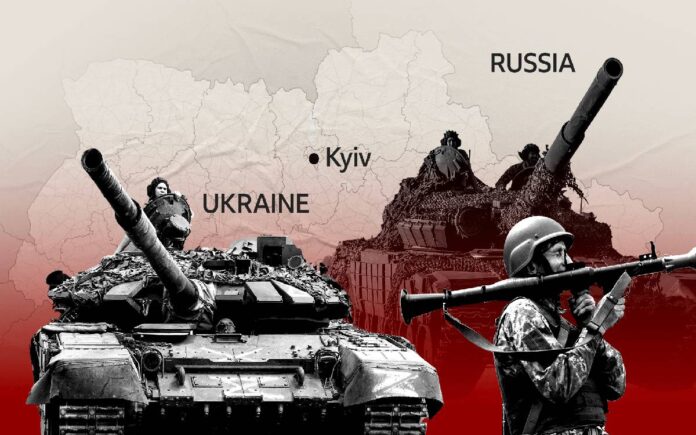Kyiv: As Ukraine and Russia exchange long-range strikes, tensions remain high ahead of what U.S. officials have labeled a “very critical” week in the ongoing conflict. The Russian Defence Ministry reported downing 119 Ukrainian drones overnight, with most of them intercepted over the Bryansk region, near the Russian border. Meanwhile, Ukraine faced a morning of air raid sirens, though no immediate reports of casualties or damage were reported.
The situation remains uncertain, particularly as discussions surrounding a potential resolution to the three-year war are shrouded in conflicting claims and skepticism. The possibility of ending Europe’s largest conflict since World War II hangs in the balance, with both sides showing signs of reluctance in reaching a compromise amid deeply entrenched hostility and mistrust.
A Turning Point in U.S. Involvement?
The United States, a key backer of Ukraine, is facing a pivotal moment. U.S. Secretary of State Marco Rubio described the upcoming week as “very critical” for determining America’s continued involvement in the war effort. As the U.S. has played a vital role in supplying military aid to Ukraine, the future of that support could be in jeopardy if the Trump administration opts to distance itself from peace negotiations.
Former President Donald Trump expressed skepticism over Russian President Vladimir Putin’s willingness to negotiate, citing Russia’s continued missile strikes on civilian areas in Ukraine. While Trump believes a peace agreement could be “close”, he has questioned whether Russia is serious about a truce, given its ongoing offensive actions.
Diplomatic Tensions and Negotiations
Diplomatic efforts have intensified, with Russian Foreign Minister Sergey Lavrov engaging in talks with Rubio over the weekend. Despite initial progress, Russia has rejected a proposal from the U.S. to implement a 30-day halt in fighting, imposing several conditions instead. Ukraine has agreed to the ceasefire proposal, though the country has strongly rejected the notion of ceding any territory to Russia as part of a peace deal.
The international community, particularly Western European nations, has criticized Russia for dragging its feet on peace talks, hoping to gain more ground militarily before entering negotiations. Meanwhile, French President Emmanuel Macron, Ukrainian President Volodymyr Zelenskyy, and Trump have agreed to continue working toward a “solid ceasefire”, a precondition for any formal peace talks.
Key Issues and Leverage
Ukraine remains firm on not giving up land in exchange for peace, while the U.S. has suggested that such territorial concessions might be necessary. A significant aspect of ongoing negotiations revolves around Ukraine’s mineral wealth, with both Kyiv and Washington advancing talks on a crucial agreement. Ukrainian Prime Minister Denys Shmyhal noted progress in the discussions, emphasizing that any deal must comply with Ukraine’s Constitution and European commitments, and be ratified by the Ukrainian Parliament.
The war, which began with Russia’s invasion of Ukraine in February 2022, has drawn in numerous international players. Putin recently thanked North Korea for sending thousands of troops and artillery supplies to aid Russia’s war efforts. Meanwhile, Iran has contributed Shahed drones, and China has provided machinery and microelectronics to bolster Russian weapon production, complicating the diplomatic landscape further.
International Support and Future Outlook
While Russia has secured support from its allies, Ukraine continues to receive significant backing from the U.S. and Europe. However, the delicate balance between diplomatic negotiations and military actions remains a critical point of contention, as all parties prepare for a week that could determine the direction of the conflict and its potential resolution.
As the war continues to evolve, international pressure mounts to find a path to peace, but the ultimate outcome remains uncertain.



